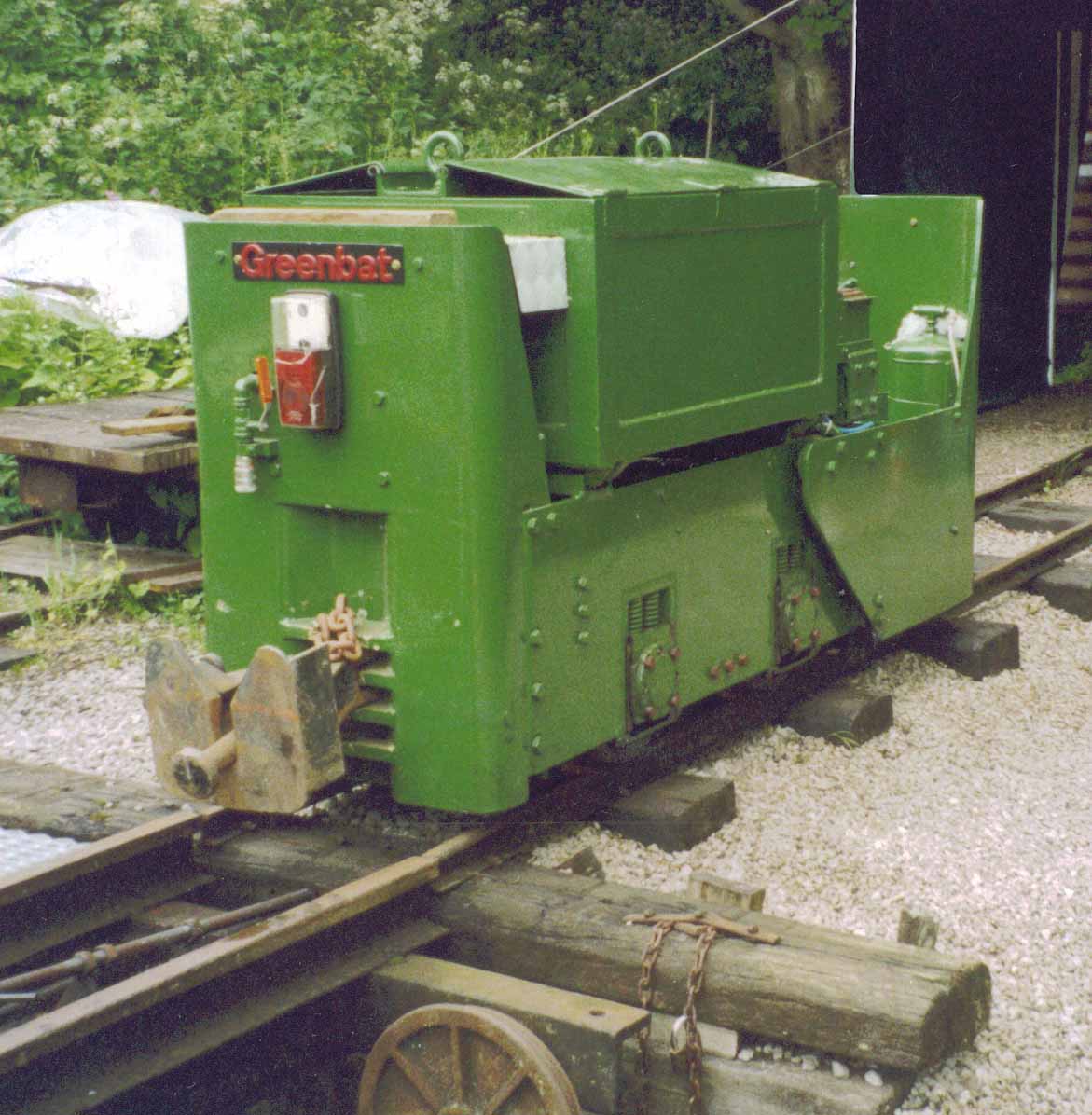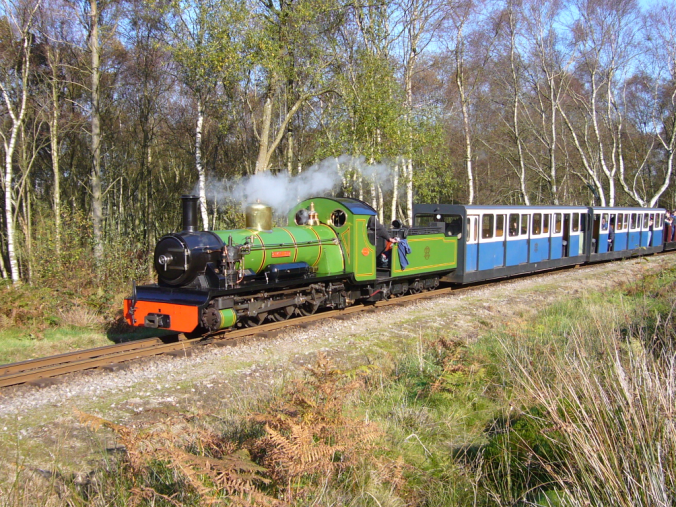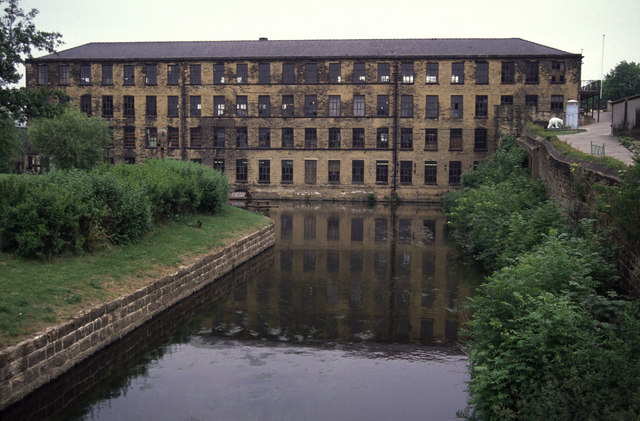|
Greenwood And Batley
Greenwood & Batley were a large engineering manufacturer with a wide range of products, including armaments, electrical engineering, and printing and milling machinery. They also produced a range of battery-electric railway locomotives under the brand name ''Greenbat''. The works was in Armley, Leeds, UK. Introduction Thomas Greenwood and John Batley first set up their business in 1856, both having previously worked at Fairburn's Wellington Foundry in Leeds. Their first premises, the Albion Foundry, was taken over from Thomas W. Lord. The foundry was located on East Street by the River Aire ( Aire & Calder Navigation), however this quickly became too small for their needs and in 1859 they constructed the Albion Works in Armley Road, Leeds. In 1885 the company branched out into Flour and Oil Milling Machinery as a result of the acquisition of the business of Joseph Whitham, Perseverance Iron Works, Kirkstall Road, Leeds. By 1888 the works covered and employed around 1600 me ... [...More Info...] [...Related Items...] OR: [Wikipedia] [Google] [Baidu] |
London Post Office Railway 1980 Stock
The London Post Office Railway 1980 Stock was built by Hunslet in Leeds between 1980 and 1982. The units were originally ordered from Greenbat, but the company went into administration As a legal concept, administration is a procedure under the insolvency laws of a number of common law jurisdictions, similar to bankruptcy in the United States. It functions as a rescue mechanism for insolvent entities and allows them to carry on ... after building just three sets. The design incorporated several of the features tested in the prototype 1962 Stock. Thirty-four of these units were built, primarily to replace the ageing fleet of 1930/1936 Stock, although some of the earlier units were retained. The new sets were originally numbered in the range 501–534, but this was later amended to 1-34 when a new numbering scheme was introduced in 1984. Following the closure of the system in 2003, all units have been withdrawn. 1980 {{England-rail-transport-stub ... [...More Info...] [...Related Items...] OR: [Wikipedia] [Google] [Baidu] |
Ribble Steam Railway
The Ribble Steam Railway is a standard gauge Heritage railway, preserved railway in Lancashire, in the United Kingdom. It was opened to the public on 17 September 2005, running along Preston, Lancashire, Preston Docks. The railway began by housing much of the collection from the previously closed Southport Railway Museum (Steamport), which was based in the old Lancashire and Yorkshire Railway engine shed at Southport (BR shed code 27C). The railway lines around Preston Dock largely fell into disuse after the closure of the docks. A preservation group that was operating in Southport relocated to Preston in 1999 and started operations as the Ribble Steam Railway in 2005. Its operations base is at but they run trains as far as Strand Road although there is no facility for locomotives to run round their train here. The Riverside station is quite a way from Preston, Lancashire, Preston city centre, but proposals have been made for a Railway platform, platform to be constructed a ... [...More Info...] [...Related Items...] OR: [Wikipedia] [Google] [Baidu] |
Standard Gauge
A standard-gauge railway is a railway with a track gauge of . The standard gauge is also called Stephenson gauge (after George Stephenson), International gauge, UIC gauge, uniform gauge, normal gauge and European gauge in Europe, and SGR in East Africa. It is the most widely used track gauge around the world, with approximately 55% of the lines in the world using it. All high-speed rail lines use standard gauge except those in Russia, Finland, and Uzbekistan. The distance between the inside edges of the rails is defined to be 1435 mm except in the United States and on some heritage British lines, where it is defined in U.S. customary/Imperial units as exactly "four feet eight and one half inches" which is equivalent to 1435.1mm. History As railways developed and expanded, one of the key issues was the track gauge (the distance, or width, between the inner sides of the rails) to be used. Different railways used different gauges, and where rails of different gauge met – ... [...More Info...] [...Related Items...] OR: [Wikipedia] [Google] [Baidu] |
Ravenglass And Eskdale Railway
The Ravenglass and Eskdale Railway is a minimum gauge heritage railway in Cumbria, England. The line runs from Ravenglass to Dalegarth Station near Boot in the valley of Eskdale, in the Lake District. At Ravenglass the line ends at Ravenglass railway station on the Cumbrian Coast Line. Intermediate stations and halts are at Muncaster Mill, Miteside, Murthwaite, Irton Road, The Green, Fisherground and Beckfoot. The railway is owned by a private company and supported by a preservation society. The oldest locomotive is ''River Irt'', parts of which date from 1894, while the newest is the diesel-hydraulic '' Douglas Ferreira'', built in 2005. The line is known locally as ''La'al Ratty'' and its gauge predecessor as ''Owd Ratty''. Nearby attractions include: the Roman Bath House at Ravenglass; the Hardknott Roman Fort, known to the Romans as ''Mediobogdum'', at the foot of Hardknott Pass; the watermills at Boot and Muncaster; and Muncaster Castle, the home of the Pen ... [...More Info...] [...Related Items...] OR: [Wikipedia] [Google] [Baidu] |
Almond Valley Light Railway
The Almond Valley Light Railway is a narrow gauge heritage railway running at the Almond Valley Heritage Trust site at Livingston, Scotland. The railway operates at weekends between Easter and the end of September and daily during some school holiday periods. There are two stations, both with waiting shelters and run round loops. A small two-road loco shed is provided at the heritage centre end of the line. There is a storage siding here also. Locomotives The line uses only internal combustion locomotives. It has never intended to use steam locomotives and therefore has no facilities for them. The railway is home to a number of electric locomotives (five battery, one overhead); however, these are not used. All of the battery locomotives are likely to require new batteries before being used again.Butcher, Alan C. ''Railways Restored''. Ian Allan, 2006, p. 167. See also *British narrow gauge railways There were more than a thousand British narrow-gauge railways ranging ... [...More Info...] [...Related Items...] OR: [Wikipedia] [Google] [Baidu] |
RAF Fauld Explosion
The RAF Fauld explosion was a military accident which occurred at 11:11am on Monday, 27 November 1944 at the RAF Fauld underground munitions storage depot in Staffordshire, England. It was one of the largest non-nuclear explosions in history and the largest on UK soil. Between of ordnance exploded, mostly high explosives. The explosion crater has a depth of and a maximum width of 1007 feet (307 m) although different sources have exaggerated this size. The crater is still visible just south of Fauld, to the east of Hanbury, Staffordshire. It is now known as the Hanbury Crater. A nearby reservoir containing of water was obliterated in the incident, along with several buildings including a complete farm. Flooding caused by the destruction of the reservoir added to the damage caused by the explosion. The exact death toll is uncertain; it is believed that about 70 people died in the explosion and resulting flood. Cause The cause of the disaster was not made clear at the time ... [...More Info...] [...Related Items...] OR: [Wikipedia] [Google] [Baidu] |
West Lancashire Light Railway
The West Lancashire Light Railway (WLLR) is a narrow gauge railway that operates at Hesketh Bank, situated between Preston and Southport in North West England. The distance between the stations on the railway is , though track extends eastwards beyond Delph station on ledge above the old clay pit which is too narrow to contain a run round loop. An extension of up to , running along the north bank of the fishing lake has been proposed. The railway has seven steam locomotives, three of which are in operating condition; two are currently being rebuilt and another is on static display. There are also two electric locomotives and many IC locomotives. History The West Lancashire Light Railway was started in 1967, by six railway enthusiast schoolboys from the Hesketh Bank area. They wanted to save the narrow gauge railway equipment which was disappearing from local industries. They leased a strip of land above the clay pits at Alty's Brickworks and started laying track using ... [...More Info...] [...Related Items...] OR: [Wikipedia] [Google] [Baidu] |
Matlock Bath
Matlock Bath is a village and civil parish in Derbyshire, England. It lies in the Peak District, south of Matlock on the main A6 road, and approximately halfway between Buxton and Derby. The population of the civil parish at the 2011 census was 753. Originally built at the head of a dead-end dirt road running along the valley of the River Derwent from Matlock, the settlement developed in the 19th century as residential and a spa town which remains a tourist destination. The steep hillside restricts development with most buildings on one side of the valley and only footbridges across the river. The road was upgraded, becoming a through-way, now designated A6, avoiding the previous coaching road approach to Matlock from Cromford over very steep hills near to the Riber plateau area. Matlock Dale is a hamlet about north of the village, and the term also refers to this stretch of the river valley. History In 1698, warm springs were discovered and a bath house was built. As the w ... [...More Info...] [...Related Items...] OR: [Wikipedia] [Google] [Baidu] |
Peak District Mining Museum
The Peak District Lead Mining Museum is located at Matlock Bath, Derbyshire, England. The museum has a mockup of a lead mine in which children may safely experience and explore how the miners, and in particular how children, were used in this dangerous aspect of England's industrial past. The museum is housed inside Grand Pavilion, Matlock Bath. See also *Derbyshire lead mining history This article details some of the history of lead mining in Derbyshire, England. Background It has been claimed that Odin Mine, near Castleton, one of the oldest lead mines in England, may have been worked in the tenth century or even as earl ... External links Peak District Lead Mining Museum Peak District Mines Historical Society Tourist attractions of the Peak District Museums in Derbyshire Mining museums in England {{UK-museum-stub ... [...More Info...] [...Related Items...] OR: [Wikipedia] [Google] [Baidu] |
Leeds Industrial Museum At Armley Mills
The Leeds Industrial Museum at Armley Mills is a museum of industrial heritage located in Armley, near Leeds, in West Yorkshire, Northern England. The museum includes collections of textile machinery, railway equipment and heavy engineering amongst others. The Grade II* listed building housing the museum was once the world's largest woollen mill. The current structures were built in 1805 by Benjamin Gott and closed as a commercial mill in 1969. They were taken over by Leeds City Council and reopened as a museum of industrial heritage in 1982. It is located between the Leeds and Liverpool Canal and the River Aire and accessed from Canal Road or Milford Place. It is part of Leeds Museums & Galleries, which also includes Leeds Art Gallery, Leeds City Museum, Leeds Discovery Centre, Thwaite Mills, Lotherton Hall, Temple Newsam, Abbey House Museum and Kirkstall Abbey. Location Armley Mills lie on the south bank and an island in the River Aire. The mill is above sea level, at a po ... [...More Info...] [...Related Items...] OR: [Wikipedia] [Google] [Baidu] |
Steel Mill
A steel mill or steelworks is an industrial plant for the manufacture of steel. It may be an integrated steel works carrying out all steps of steelmaking from smelting iron ore to rolled product, but may also be a plant where steel semi-finished casting products are made from molten pig iron or from scrap. History Since the invention of the Bessemer process, steel mills have replaced ironworks, based on puddling or fining methods. New ways to produce steel appeared later: from scrap melted in an electric arc furnace and, more recently, from direct reduced iron processes. In the late 19th and early 20th centuries the world's largest steel mill was the Barrow Hematite Steel Company steelworks located in Barrow-in-Furness, United Kingdom. Today, the world's largest steel mill is in Gwangyang, South Korea. [...More Info...] [...Related Items...] OR: [Wikipedia] [Google] [Baidu] |

_Railway_(Mail_Rail)_Car_(2).jpg)





